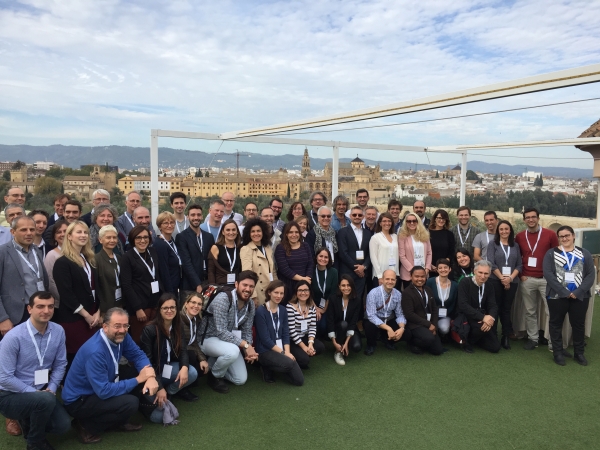The CLARA project, coordinated by the Euro-Mediterranean Center on Climate Change (CMCC), concluded successfully at the end of 2020. Its objectives were to analyse and demonstrate the economic and social value produced by climate services and the application of the data generated by them to practical matters.
The project, in which the University of Cordoba participated, sought a way to transform climate data from European agencies into tangible and useful results for decision-making, with a view to the planning done by different users who need water and energy as a resource. "This has been demonstrated in a range of services at a truly excellent prototype level, and that has been one of the project’s achievements," explains researcher María José Polo, from the María de Maeztu Excellence Unit - Department of Agronomy.
The idea was to generate a product for the European market that would render the European innovation sector more competitive. In this regard the UCO participated as a scientific intermediary, taking the seasonal climate forecast and transforming it into a variable to support decision-making in some water and energy sectors. "We needed something that would be useful for more than the pilot project. It had to be adaptable to other cases in the future," explained Professor Polo who headed up the project at the UCO.
The project’s main original contribution is that the initial idea could be applied to what is known in industrial design as a POC, a "Proof of Concept"; that is, as something achievable. The idea developed by CLARA is an application featuring a series of climatic facilities, with their pertinent characteristics, and where users can see the data in real time and make their decisions.
The design consists of two tools, programmed for the Web, that the user can access with a personalized password and use a program where his system is already implemented, receiving customised information. Three services were put into operation: one corresponding to the operation of multi-purpose reservoirs, another for mini-hydroelectric plants (power generation structures in rivers, without associated reservoirs, which take advantage of the river's energy and are common in mountain areas), and a third for the design and operation of photovoltaic solar energy systems.
"That forecast that the European agencies provide, supplying only climate information, we transfer that to how it would translate in terms of the flow that circulates through the river network, or solar energy received, and from there to derived indicators necessary for management" . In this way, the user, seeing the flow or energy forecast, can make short- or medium-term decisions, such as whether he needs to release volume at the reservoir, in the event of a possible flood, or if the energy potentially received at the facility is less than the generation thresholds.
The pilot of the first two services is on the southern slope of the Sierra Nevada range, in the Alpujarra mountains, and also in the Rules Reservoir of the Guadalfeo River. However, the advantage it offers is that the tool is designed to be able to adapt to any system, it only being necessary to include the characteristics of the reservoir that requests the service. The photovoltaic service was designed in a similar way.
The other main objective of this study was to include users from the beginning in the whole process involved in the co-development of the different services. In this regard, CLARA adapted to the new model of citizen-oriented science promoted by Europe. "The users, coming from various sectors at which the services are directed, were involved in a very dynamic way, and this means that the services reached a level of almost market products", explained María José Polo.
Engaging them from the outset has been the key to success, and that was also the role of the UCO, which coordinated the forum of external users evaluating the process. In addition, three face-to-face meetings were organized: in Stockholm, where the criteria for the design of services from the user's point of view were discussed; another in Cordoba, where the service and its operation were designed from the technical point of view; and, lastly, in Venice, where the market forms and studies and the design of the business model were covered.
The last step, that which they are currently on, is to apply the study to business, for which they are examining the feasibility of putting the service into operation and the best way to do this as a research group. Specifically, they are discussing whether to exploit it directly or reach an agreement with a company and share the operation of the services. What they are sure of is that "from the market point of view, it could have a great impact, becoming an online subscription service that is always up-to-date"
The CLARA project - “Climate forecast enabled knowledge services” (H2020-SC5-2016-2017- 730482-1) was funded by the European Union through the H2020-SC5-2016-Two stage call.
"This report is part of the project “CONSOLIDA-UCO ECT2020-000810", funded by MCIN/AEI/10.13039/501100011033 and by European Union “NextGenerationEU”/PRTR”.


